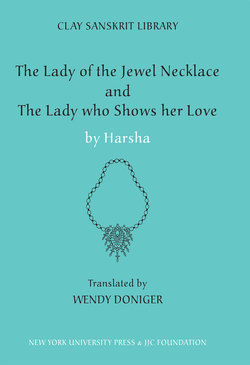Читать книгу The Lady of the Jewel Necklace & The Lady who Shows her Love - Harsha - Страница 9
На сайте Литреса книга снята с продажи.
Оглавлениеcompounds
We also punctuate the division of compounds (samasa), simply by inserting a thin vertical line between words. There are words where the decision whether to regard them as compounds is arbitrary. Our principle has been to try to guide readers to the correct dictionary entries.
example
Where the Deva·nagari script reads:
Others would print:
We print:
And in English:
“May Ganesha’s domed forehead protect you! Streaked with vermilion dust, it seems to be emitting the spreading rays of the rising sun to pacify the teeming darkness of obstructions.”
“Nava·sahasanka and the Serpent Princess” I.3 by Padma·gupta
drama
Classical Sanskrit literature is in fact itself bilingual, notably in drama. There women and characters of low rank speak one of several Prakrit dialects, an “unrened” (prakrta) vernacular as opposed to the “refined” (samskrta) language. Editors commonly provide such speeches with a Sanskrit paraphrase, their “shadow” (chaya). We mark Prakrit speeches with ┌opening and closing┘ corner brackets, and supply the Sanskrit chaya in endnotes. Some stage directions are original to the author but we follow the custom that sometimes editors supplement these; we print them in italics (and within brackets, in mid-text).
